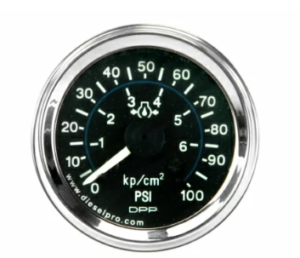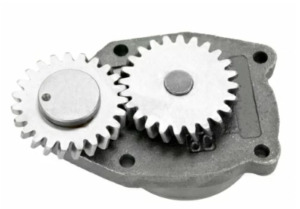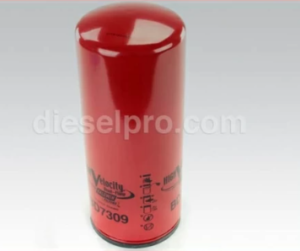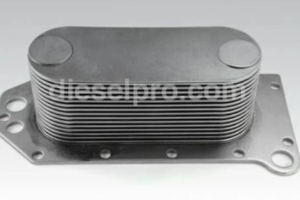Introduction
The lubrication system in Cummins QSC 8.3 and QSL 9 engines is essential for reducing friction, cooling engine components, and preventing premature wear. Proper lubrication ensures that metal parts remain protected, preventing direct contact that could cause severe engine damage.
Understanding how the oil pump works, the importance of oil filter maintenance, and how to identify and fix oil leaks is crucial for extending engine life, improving performance, and preventing costly repairs. This guide provides a comprehensive overview of the lubrication system, servicing best practices, troubleshooting oil leaks, and maintaining proper oil levels for Cummins QSC 8.3 and QSL 9 engines.
General Parts Catalog for QSC 8.3 Cummins Marine and Industrial Engines
Lubrication System & Related Components for Cummins QSC Engine
General Parts Catalog for QSL 9 Cummins Marine and Industrial Engines
Lubrication System & Related Components for Cummins QSL Engine
1. The Role of the Lubrication System

The lubrication system in a diesel engine does more than simply provide oil to moving parts. It performs several critical functions, including:
- Reducing Friction and Wear: Oil forms a thin protective film between metal components, preventing metal-to-metal contact.
- Cooling Engine Components: As oil circulates, it absorbs heat and transfers it away from bearings, pistons, and the crankshaft.
- Cleaning and Removing Contaminants: Oil carries metal particles, dirt, and debris to the filter, preventing sludge buildup.
- Sealing Piston Rings and Cylinder Walls: Oil provides a secondary seal, helping maintain compression efficiency.
- Preventing Corrosion: Oil contains anti-corrosion additives that protect internal components from oxidation and rust.
2. Oil Pump Operation and Servicing

2.1 How the Oil Pump Works
The oil pump is the heart of the lubrication system, ensuring oil is delivered under pressure to all critical engine components. The pump draws oil from the sump (oil pan) and pushes it through the oil filter before distributing it to engine bearings, camshafts, and other moving parts.
The Cummins QSC 8.3 and QSL 9 engines use a gear-driven oil pump that operates directly from the crankshaft or camshaft, ensuring a consistent flow of pressurized oil.
Key components of the oil pump:
- Pickup Tube: Draws oil from the sump.
- Pump Housing: Contains gears that create oil pressure.
- Relief Valve: Prevents excessive pressure that could damage engine seals.
- Oil Galleries: Direct oil to bearings, pistons, and camshafts.
2.2 Signs of Oil Pump Failure
A failing oil pump can cause catastrophic engine damage due to lack of lubrication. Symptoms of a failing oil pump include:
- Low Oil Pressure Warning Light: If oil pressure drops below the recommended range (30-40 psi at operating temperature), it could indicate a failing oil pump.
- Engine Overheating: Without proper lubrication, friction increases, leading to excess heat buildup.
- Unusual Noises (Knocking or Ticking Sounds): Insufficient lubrication causes bearing wear and internal knocking.
- Sludge Buildup in the Oil Pan: If the oil pump is failing, contaminants may settle in the sump instead of being circulated and filtered.
2.3 Servicing the Oil Pump
Steps to inspect and service the oil pump:
- Drain the engine oil completely to remove debris.
- Remove the oil pan to access the oil pump.
- Inspect the pickup tube for blockages (sludge or debris can clog the intake).
- Remove the oil pump and check gear clearance for wear.
- Inspect the relief valve to ensure proper pressure regulation.
- Replace worn-out or damaged parts before reinstalling the pump.
- Reinstall the oil pan and refill with fresh oil.
If the oil pump is worn beyond tolerance, replacement is required to prevent engine failure.
3. Oil Filter and Lubrication Maintenance

3.1 Importance of Regular Oil Changes
Regular oil and filter changes are essential for maintaining engine health and efficiency. Over time, oil breaks down and loses its lubricating properties, leading to increased wear and sludge formation.
Recommended oil change intervals for Cummins QSC 8.3 and QSL 9 engines:
- Standard oil: Change every 250 hours or 6,000-10,000 miles.
- Synthetic oil: Change every 500 hours if using high-quality synthetic diesel oil.
- Severe duty operation: Change every 200 hours in harsh environments (extreme temperatures, high loads).
3.2 Choosing the Right Engine Oil
Using the correct oil type ensures proper lubrication and engine protection.
Cummins Recommended Oil Types:
- 15W-40 API CJ-4 or CK-4: Best for standard operations.
- 5W-40 synthetic diesel oil: Recommended for cold-weather operation.
The right oil protects against excessive wear, reduces deposit formation, and improves engine efficiency.
3.3 Replacing the Oil Filter
The oil filter removes contaminants from the oil to prevent sludge buildup and wear. A clogged filter reduces oil flow, leading to low oil pressure and potential engine damage.
Steps to replace the oil filter:
- Drain the old oil from the engine.
- Locate the oil filter on the engine block.
- Use an oil filter wrench to loosen and remove the old filter.
- Apply fresh oil to the rubber gasket on the new filter to prevent dry sealing.
- Install the new filter and hand-tighten it to Cummins specifications.
- Refill the engine with the correct oil type and amount.
- Start the engine and check for leaks or low oil pressure warnings.
4. Identifying and Fixing Oil Leaks

4.1 Common Causes of Oil Leaks
Oil leaks can lead to loss of lubrication, reduced efficiency, and potential safety hazards. Identifying the source of a leak is critical for preventing further engine damage.
Common causes of oil leaks:
- Worn-Out Gaskets and Seals: Valve cover gaskets, oil pan gaskets, and crankshaft seals deteriorate over time.
- Loose or Damaged Oil Drain Plug: A stripped or over-tightened drain plug can leak oil.
- Cracked Oil Cooler or Lines: A damaged oil cooler may cause external leaks.
- Overfilled Oil Level: Excess oil can cause pressure buildup, forcing oil past seals.
- High Oil Pressure: A faulty oil pressure relief valve can cause oil leaks.
4.2 How to Identify Oil Leaks
Visual Inspection:
- Look for oil puddles under the engine after parking.
- Inspect engine block, oil pan, and valve cover for wet spots.
Dye Test Method:
- Add UV dye to the engine oil and use a UV light to detect leaks.
Pressure Testing:
- Use an oil system pressure test kit to detect internal leaks.
4.3 Fixing Oil Leaks
Valve Cover Gasket Replacement:
- Remove the valve cover bolts.
- Clean the gasket mating surface.
- Install a new gasket and torque bolts to spec.
Oil Pan Gasket Replacement:
- Drain the oil and remove the oil pan bolts.
- Scrape old gasket material from the mating surface.
- Apply a new gasket and reinstall the pan.
Replacing Oil Seals (Front and Rear Crankshaft Seals):
- Remove the timing cover and crankshaft pulley.
- Carefully pry out the old seal.
- Install a new seal with sealant to prevent leaks.
Fixing a Damaged Oil Cooler:
- If oil is leaking from the cooler or lines, replace the damaged components.
Fixing a Loose Drain Plug:
- Use a new crush washer and tighten the plug to the recommended torque.
5. Preventative Maintenance Tips
- Check oil levels weekly and top off if needed.
- Use only high-quality oil and filters.
- Inspect for leaks regularly and fix them promptly.
- Keep oil cooler and passages clean to maintain proper flow.
- Change oil and filter on time to prevent sludge formation.
Conclusion
Proper lubrication system maintenance is critical for extending the lifespan of Cummins QSC 8.3 and QSL 9engines. Regular oil changes, oil pump servicing, and leak prevention ensure optimal performance and efficiency.
For high-quality replacement parts, filters, and oil pumps, visit Diesel Pro Power for the best aftermarket components for Cummins diesel engines.
General Parts Catalog for QSC 8.3 Cummins Marine and Industrial Engines
Lubrication System & Related Components for Cummins QSC Engine
General Parts Catalog for QSL 9 Cummins Marine and Industrial Engines
Lubrication System & Related Components for Cummins QSL Engine



 Free US Calls: 1-888-433-4735
Free US Calls: 1-888-433-4735 International: 305-545-5588
International: 305-545-5588